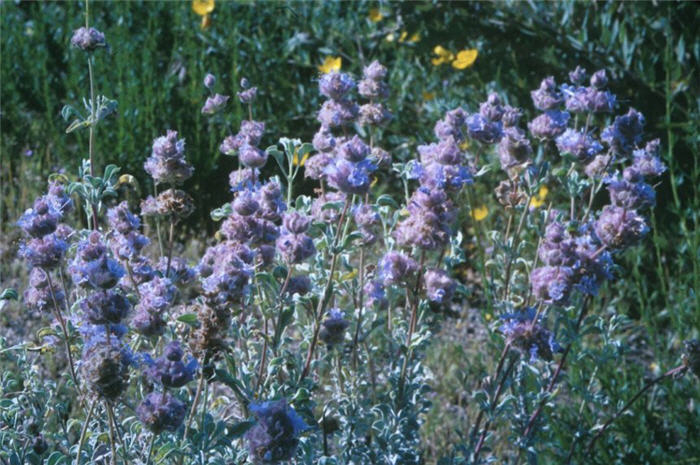| Botanical Name: Salvia dorrii | |
| Common Name: Dorr Sage |

-
Anatomy
-
Culture
-
Design
Plant Type
Broadleaf Evergreen, Shrub, Perennial
Height Range
1-3'
Flower Color
Blue, Violet
Flower Season
n/a
Leaf Color
Grey Green
Bark Color
Grey
Fruit Color
n/a
Fruit Season
n/a
Sun
Full
Water
Low
Growth Rate
Moderate
Soil Type
Sandy, Loam, Rocky
Soil Condition
Average, Poor, Well-drained, Dry
Soil pH
Neutral, Basic
Adverse Factors
Attracts Bees
Design Styles
English Cottage, Meadow, Mediterranean, Ranch, Spanish
Accenting Features
Showy Flowers
Seasonal Interest
Summer, Fall
Location Uses
Entry, Perennial Border, Shrub Border, Foundation, Parking Strip, Walls / Fences
Special Uses
Hedge
Attracts Wildlife
Butterflies
Information by: Stephanie Duer
Photographer: Susan Frommer/MSN
Photographer: Susan Frommer/MSN
-
Description
-
Notes
A wonderful small sub-shrub for the urban garden. It forms a tight, rounded mound, about 1 to 2 feet tall and 2 to 3 feet wide. Foliage is silver-grey, long and oval, and aromatic when crushed or bumped. Pale blue to purple flowers form clusters at the ends of branches during the summer months. Attracts bees and butterflies. semi-evergreen. A Utah native.
Grow in full sun, and well-drained, loose soil (gravelly, sandy, or clay loam). Very drought and heat tolerant, so it thrives with a southern or western exposure, even against a wall or fence. Tight, mounding habit lends itself not needing pruning.